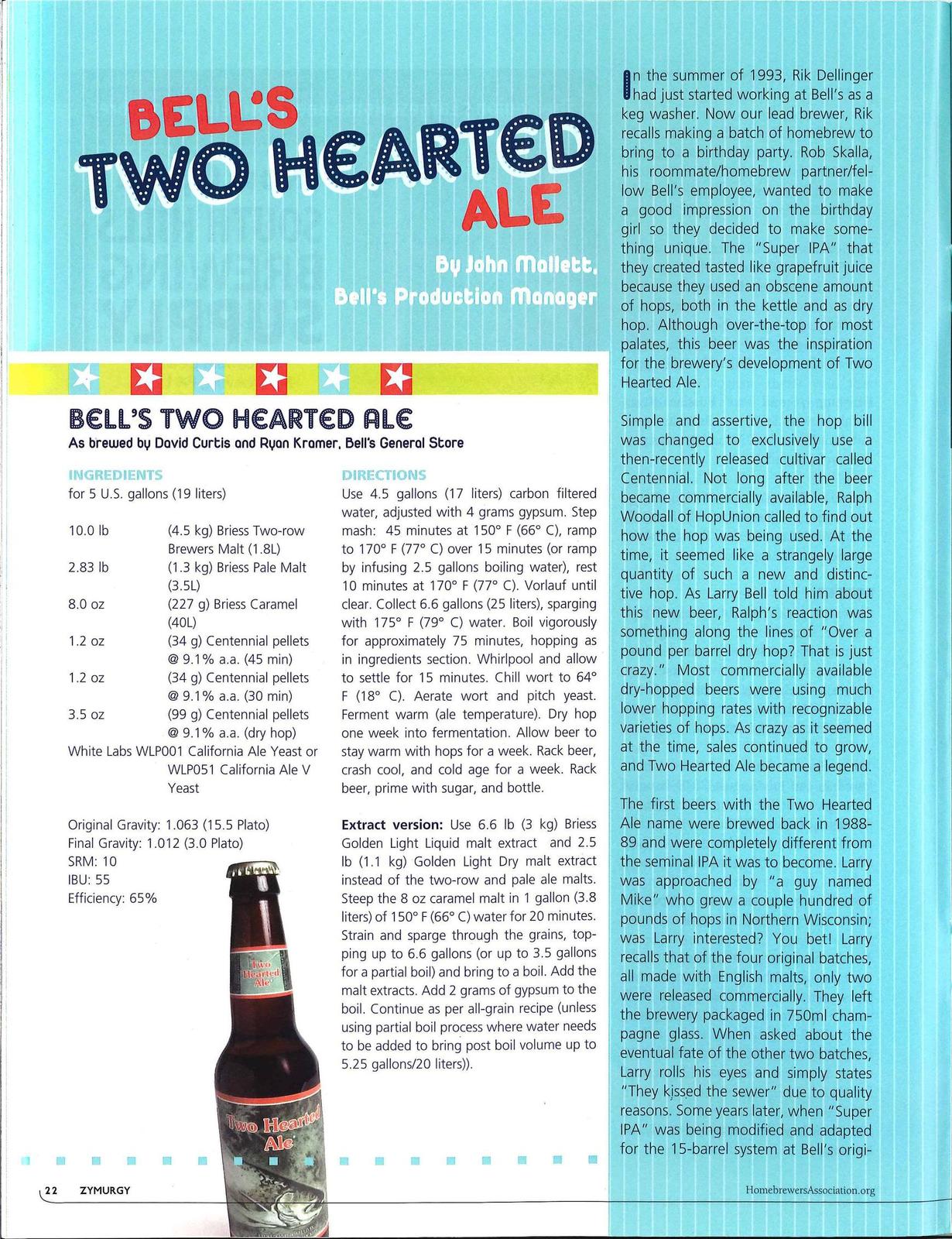b128thopen
Member
- Joined
- Jul 14, 2014
- Messages
- 7
- Reaction score
- 0
A weekend ago I made the two hearted ale recipe that is posted on Bell's website...attached.
Somewhere along the way something went wrong b.c after I finished my wort only had 4.5 gallons. The gravity check was right on so I did not add more water. Just thought it was weird.
My question....
The recipe says to add hops a week into fermentation and "Allow beer to stay warm with hops for a week." Does this mean to take it out of my swamp cooler (ale temps) and let it sit closer to 75 degrees?
Question 2: "Crash Cool and cold age for a week" does that mean put the carboy in the fridge? If so, once I bottle do I need to put it directly back in the fridge or do I let it sit warm in the bottle for the next 2-4 weeks?
I may have bit off more than I can handle with this one! But damn its such a good beer!

Somewhere along the way something went wrong b.c after I finished my wort only had 4.5 gallons. The gravity check was right on so I did not add more water. Just thought it was weird.
My question....
The recipe says to add hops a week into fermentation and "Allow beer to stay warm with hops for a week." Does this mean to take it out of my swamp cooler (ale temps) and let it sit closer to 75 degrees?
Question 2: "Crash Cool and cold age for a week" does that mean put the carboy in the fridge? If so, once I bottle do I need to put it directly back in the fridge or do I let it sit warm in the bottle for the next 2-4 weeks?
I may have bit off more than I can handle with this one! But damn its such a good beer!



